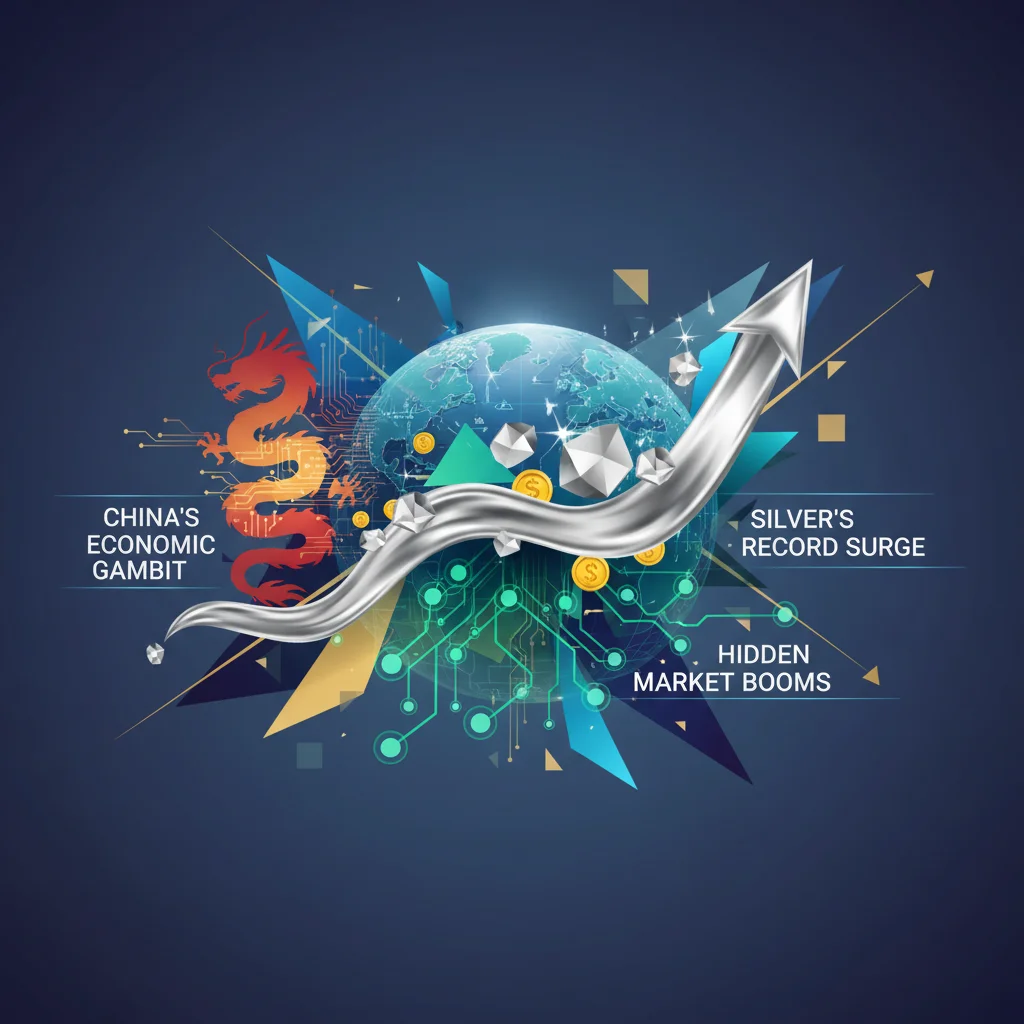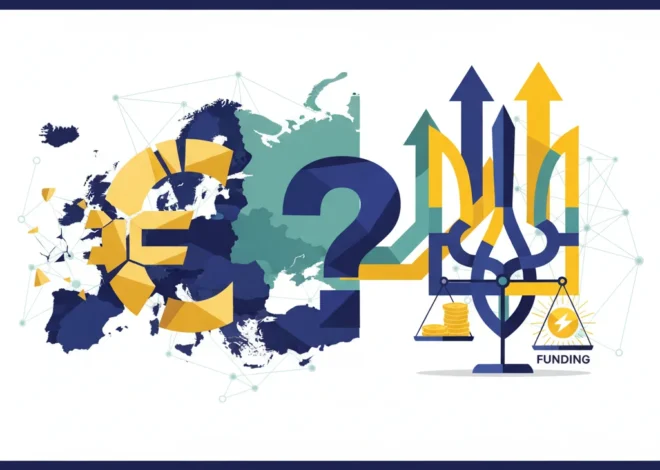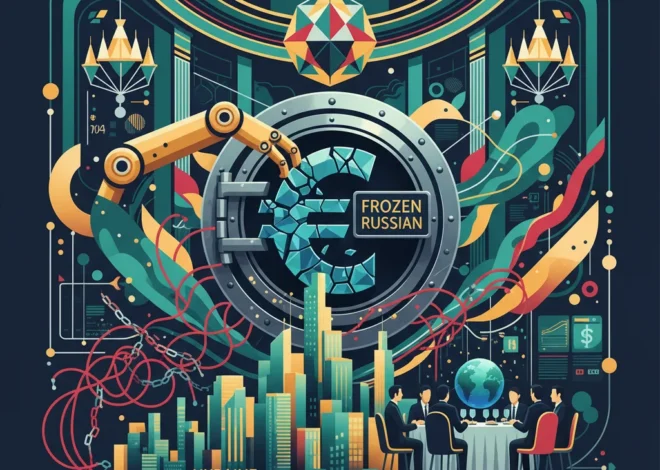
Global Crosscurrents: Decoding China’s Economic Gambit, Silver’s Record Surge, and the Hidden Market Booms
In today’s interconnected global economy, the ripples from one major event can travel across oceans, influencing disparate markets and creating unforeseen consequences. A policy decision in Beijing can rattle the stock market in New York, a surge in a single commodity can redefine industrial supply chains, and shifting geopolitical sands can create a bonanza for niche professional services. We are living in an era of complex crosscurrents, where understanding the links between seemingly unrelated headlines is paramount for any investor, business leader, or finance professional.
A recent dispatch from the Financial Times perfectly encapsulates this reality, highlighting three critical trends: a provocative assessment of China’s competitive strategy, a record-breaking rally in silver prices, and a quiet boom in the field of immigration law. On the surface, these topics appear to have little in common. Yet, when examined more closely, they paint a vivid picture of the global economic landscape—one defined by strategic competition, a flight to hard assets, and the relentless global pursuit of talent and opportunity. This article delves into each of these trends, providing the depth and context needed to navigate the challenges and opportunities they present.
The Great Wall of Production: Is China’s Economic Strategy a Global Threat?
A senior western official’s stark warning that China’s economic model aims to “pull everybody else down” has sent shockwaves through the world of international finance and economics. This isn’t mere diplomatic hyperbole; it’s a direct reference to a deliberate and aggressive industrial policy that is reshaping global trade. At the heart of the issue is China’s immense state-sponsored manufacturing capacity, particularly in green technology sectors like electric vehicles (EVs), solar panels, and lithium-ion batteries.
Facing a sluggish domestic economy, a deep crisis in its property sector, and weak consumer demand, Beijing has doubled down on an export-led growth model. By providing massive subsidies to its manufacturers, it has created a deluge of low-cost goods that are now flooding international markets. While this may sound like a win for consumers, it poses an existential threat to manufacturing industries in Europe and North America. Western automakers, for instance, are struggling to compete with the sheer volume and aggressive pricing of Chinese EVs, leading to calls for protective tariffs and accusations of unfair trade practices.
The United States has already responded with steep tariff hikes, and the European Union is conducting its own anti-subsidy investigations. The core of this economic conflict lies in a fundamental divergence of economic philosophies. China’s state-capitalist model prioritizes production, employment, and global market share, often at the expense of short-term profitability. This strategy not only undercuts competitors but also creates significant deflationary pressure on the global economy, complicating the inflation-fighting efforts of central banks like the Federal Reserve and the ECB.
To better understand the scale of this dynamic, consider the competitive landscape in the electric vehicle market.
| Factor | China’s Approach | Western Response & Impact |
|---|---|---|
| Production Scale | Massive state-subsidized capacity leads to overproduction. | Western manufacturers face intense price pressure and market share loss. |
| Pricing Strategy | Aggressively low prices to capture global market share. | Triggers anti-dumping investigations and protective tariffs. |
| Supply Chain Control | Dominance in critical minerals and battery technology. | Spurs efforts in the US and EU to build resilient, independent supply chains. |
| Global Economic Impact | Exports deflation, potentially lowering prices for some goods. | Threatens domestic manufacturing jobs and industrial base; complicates monetary policy. |
For investors, this geopolitical chess match introduces a new layer of risk and opportunity into the stock market. Companies heavily exposed to Chinese competition may face significant headwinds, while those involved in reshoring and building alternative supply chains could see substantial growth. The era of frictionless globalization is over, replaced by a more fragmented and competitive economic order.
The Silver Surge: More Than Just a Precious Metal
Away from the theater of geopolitical trade wars, another significant trend is unfolding in the commodity markets. Silver prices have surged to their highest levels in over a decade, a move that signals much more than just speculative trading. According to the FT report, this rally is a powerful indicator of broader shifts in both industrial demand and investor sentiment.
Silver’s unique dual identity is key to its current appeal. It is both a precious metal, like gold, and a critical industrial metal. This duality places it at the confluence of two major global forces:
- The Green Energy Transition: Silver is an indispensable component in the manufacturing of solar panels due to its exceptional electrical conductivity. As the world accelerates its transition to renewable energy—a trend ironically fueled by China’s mass production of solar technology—the demand for physical silver is structurally increasing. It is also vital for electric vehicles and 5G infrastructure, embedding it deeply into the financial technology and hardware sectors of the future.
- Economic and Geopolitical Uncertainty: In times of turmoil, investors flock to hard assets as a safe haven. With persistent inflation, rising geopolitical tensions, and questions about the stability of the global banking system, silver serves as a store of value. Often dubbed “poor man’s gold,” it offers a more accessible entry point for investors looking to hedge their portfolios against currency debasement and market volatility. The rise of digital assets has also brought new attention to physical commodities, with some in the blockchain space exploring ways to tokenize assets like silver to enhance liquidity in trading.
The current rally reflects a potent combination of these factors. Industrial consumption is outstripping mine production, creating a physical deficit, while investment demand is simultaneously rising. For those involved in finance and investing, the gold-to-silver ratio—a measure of how many ounces of silver it takes to buy one ounce of gold—is a key metric to watch. A falling ratio, as we are seeing now, often suggests that silver is outperforming gold and can signal growing industrial optimism or heightened inflationary fears.
The Talent Tug-of-War: A Bonanza for Immigration Lawyers
The third piece of this global puzzle highlights the human element of our interconnected economy. The reported “bonanza” for immigration lawyers is a fascinating lagging—and leading—indicator of major economic shifts. In a world defined by talent scarcity and global competition, the ability to move skilled workers across borders has become a critical strategic advantage for corporations and nations alike.
Several factors are fueling this boom:
- A Global War for Talent: Companies are no longer limited by national borders in their search for the best and brightest. The rise of remote work and the increasing specialization of skills, particularly in technology and finance, have made global recruitment a necessity.
- Complex and Shifting Regulations: As nations become more competitive, they are also becoming more protectionist. Immigration laws in the US, UK, and Europe are in constant flux, creating a complex web of regulations that require expert legal navigation.
- Corporate Expansion and M&A: As businesses expand into new markets or acquire foreign companies, they need to transfer key personnel, from executives to specialized engineers. This makes immigration law an integral part of international business and finance operations.
This trend is more than just a boon for one legal specialty; it’s a barometer of globalization itself. High demand for immigration expertise indicates that despite geopolitical tensions and trade friction, the cross-border flow of human capital remains robust. It shows that top-tier talent is more mobile than ever, and businesses are willing to invest significant resources to acquire it. This has profound implications for everything from urban real estate markets and university enrollments to the growth of financial technology hubs around the world.
Conclusion: Weaving the Threads of a Complex Global Narrative
China’s industrial strategy, silver’s record-breaking rally, and the surging demand for immigration lawyers are not isolated events. They are interwoven threads in the complex tapestry of the 21st-century global economy. China’s push into green tech directly fuels the industrial demand for silver. The geopolitical uncertainty created by this aggressive strategy simultaneously boosts silver’s appeal as a safe-haven asset. And through it all, the global competition for the talent needed to design and manage these complex systems drives the demand for legal experts who can navigate the world’s borders.
For anyone engaged in investing, finance, or business leadership, the lesson is clear: a siloed view of the world is no longer sufficient. The ability to connect the dots between geopolitics, commodity markets, and human capital flows is the definitive skill for navigating the turbulent but opportunity-rich environment ahead. The world is not getting simpler, but for those who can read the crosscurrents, the path forward becomes much clearer.


